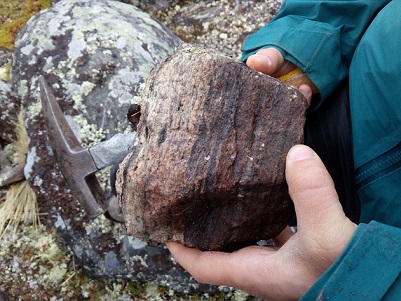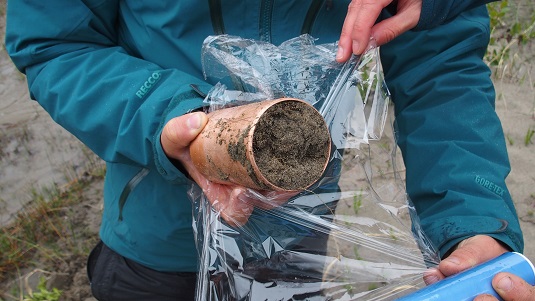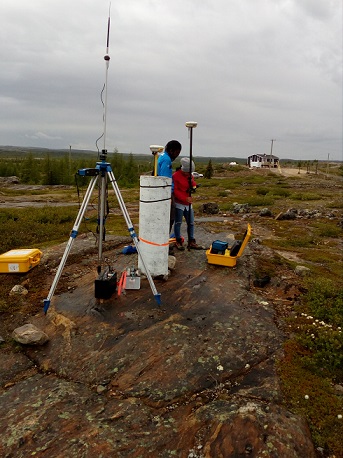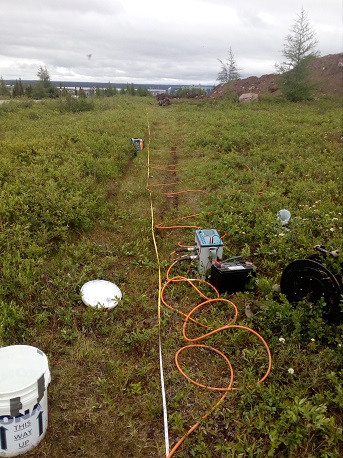Assessment of the potential of geothermal resources and technologies for the community of Kuujjuaq
Project co-led by Jasmin Raymond, Chrystel Dezayes, and Mikael Philippe
The objective of this project is to study the potential of three types of geothermal energy systems for the community of Kuujjuaq: underground thermal energy storage (UTES), ground source heat pumps (GSHP) and deep well geothermal systems.
Interview with Raymond Jasmin, co-leader of the GEOTHERMIE project
- How did the project come about?
The project was initiated three years ago in northern Québec in Canada in the context of an energy surplus in southern Québec while in the north the situation is the reverse. Northern Québec relies on diesel as an energy source and needs to adapt to renewable energies in an Arctic context. This project is in line with the research priorities identified by the Institut Nordique du Quénec (INQ) in collaboration with the Makivik Research Centre. The first step was to create a Research Chair position on geothermal energy potential in the Arctic funded by the INQ. Following this, the Nunavik Human–Environment Observatory enabled a first project to be developed with the French Bureau of Geological and Mining Research (BRGM), and last year, a collaborative research effort was developed with the research group working on solar energy in the Arctic led by Didier Haillot at the Université de Pau.
- Which communities are concerned?
The project concerns all of northern Canada, but the interventions have principally taken place in Kuujjuaq since the summer of 2017. These field projects aim to study the potential of three main types of geothermal energy systems: ground source heat pumps (GSHP), underground thermal energy storage (UTES), and deep well geothermal systems. Ground source heat pumps draw heat from the earth using heat exchangers and transfer it to buildings, saving energy. Thermal energy storage involves producing heat (for example, with solar panels) and storing it underground to use during the winter when needed. Deep geothermal energy requires drilling at a depth of 2–3 km or more to bring hot water (50 °C or higher) to the surface to heat buildings without using a heat pump. A project has also been started in Kuujjuarapik-Whapmagoostui this year. In 2018, ground and rock samples were collected in both communities and studied for their thermal and hydraulic properties, etc. in order to create feasibility models, including their financial viability and whether it is possible to adapt the technology for the context.


- Who are the stakeholders and team members?
On-site and through the INQ, the project team has worked with the Kativik Regional Administration, the municipality of Kuujjuaq and the Land Corporation of Kuujjuaq. As the study involves rock sampling on Indigenous land, the project requires the authorization of the Land Corporation.
The team is composed of four researchers:
- - Jasmin Raymond(project director, specialized in geothermal energy)
- - Nicoló Giordano (post-doctoral researcher specialized in thermal storage)
- - Mafalda Miranda (doctoral student specialized in deep geothermal energy)
- - Inès Kanzali (Master’s student specialized in geothermal heat pumps)
- The objective of the project team is to evaluate geothermal energy feasibility in the Arctic.
Key collaborators include:
Chrystel Dezayes (researcher at the BRGM in France), Didier Haillot and several other geology professors from the Université Laval, including René therrien and Richard Fortier (département géologie).
- What is your approach? How are you working with the local community?
The first step is underground exploration through rock sampling before we can target buildings and users. Thanks to a significant grant from the Canadian Foundation for Innovation, a new lab at Canada’s National Institute of Scientific Research (INRS) was developed to analyze thermal and hydraulic properties and the potential of geothermal resources. We are employing a range of equipment with the most recent advanced technology, including an infrared scanner, which allows us to make very accurate measurements. This technology offers the possibility of modeling systems to simulate the operation of a given geothermal system and to evaluate its financial viability.
For the subsurface analysis, the study was guided by the needs of the community. For example, the team is currently working with the Kativik Regional Administration on a thermal storage system to heat the drinking water distributed in the town of Kuujjuaq. In the winter, the water is collected by trucks and heated with oil-fired boilers so it doesn’t freeze. We are working on a system of solar panels to warm the ground and thus preheat the water, reducing the need for fuel oil.


- Can you single out any key highlights?
The first time I went to Nunavik was on crutches with a broken leg, when I participated in a Kuujjuaq mining workshop. Although this made the trip a lot more complicated, it also created opportunities to meet a lot of people. These unusual circumstances led to an acceleration of the project, and the field visits were launched in the summer of 2017.
- What are the results so far?
We’re just at the beginning of the project, so we’re still carrying out the feasibility studies. The next stage will be to move forward with pilot projects. There is the whole issue around the availability of technology in the Arctic when talking about geothermal energy. The team has already been able to draw some useful information from the current studies applicable to the short term. The ground source heat pumps, which show good energy potential, could be installed at a low cost if it is possible to bore holes. This would result in some energy savings, but to a lesser extent than in southern Québec due to the very low temperature of the ground. The second solution, thermal storage, would allow the community to be totally independent, producing and recuperating their own heat. However, the costs are higher, so this would be a medium-term solution. In the long term, deep geothermal energy would reduce fuel-oil consumption for heating to zero. But this would involve drilling at a depth of 2–3 km with exorbitant costs. So this technology would need to be deployed on a large scale.
- Links to websites and publications created for this project
- Research Chair on geothermal energy potential in the Arctic
- New geothermal energy lab at the INRS
- 2018 Présentation Université Laval aux Journées de Recherche Nordiques
- 2017 Arctic Circle: Are Geothermal Technologies a Solution to Energy Challenges Faced in Nunavik ?
- 2017 Arctic Circle: Developing Geothermal Technologies in Nunavik
